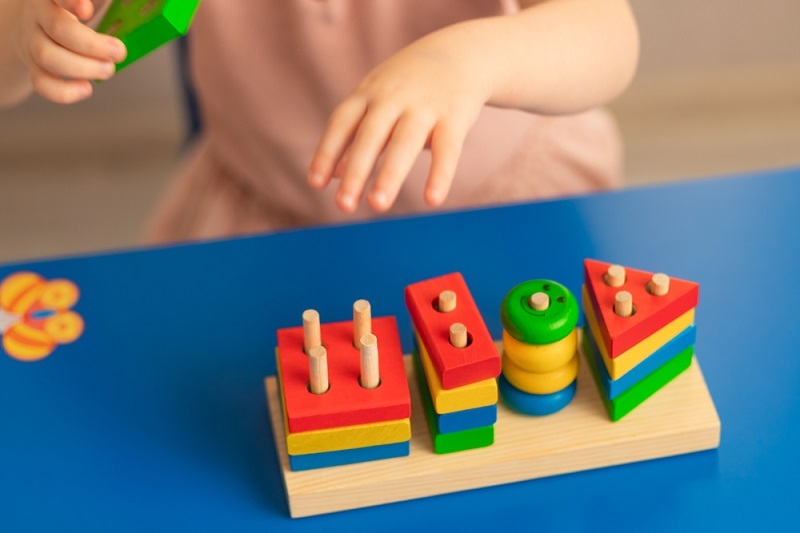Kolb's Learning Styles: A Clear Guide to How We Learn

Learning isn’t about cramming facts into your head. It’s about connecting with experiences, reflecting on them, and putting them into action. That’s the core of Kolb’s experiential learning—a model that explains how real learning happens. Instead of pretending everyone learns the same way, David Kolb mapped out a cycle of learning and four distinct learning styles.
If you’re an educator, trainer, or just someone who wants to understand how people learn, knowing Kolb’s Learning Cycle and his learning styles can change how you approach learning and teaching. Let’s break it down without the jargon.
The Foundation of Kolb’s Model
Kolb never pulled his theory out of thin air. In reality, he synthesized the ideas and theories of John Dewey, Jean Piaget, and Kurt Lewin. In his words, the main point is straightforward: learning is the process that occurs during experience transformation.
Hence, it is called Kolb's experiential learning. According to Kolb, learning is something one actively does: experience leads to reflection, which leads to forming thoughts and ideas, and finally to carrying out actions.
The model works on two fronts:
- The Learning Cycle: a set of stages everyone goes through to learn effectively.
- Learning Styles: patterns of preference that shape how individuals go about the cycle.
Also check: Best Educational Apps & Games for Kids | Top Picks
The Four Stages in Kolb's Learning Cycle

According to Kolb, a learning cycle is at the core of his theory. Simply put, we learn by moving through four stages; to skip one is to feel incomplete.
The four stages in the cycle can be broken down as follows:
- Concrete Experience (CE): Something new is done or experienced directly.
- Reflective Observation (RO): Taking a step back to contemplate what we actually learned.
- Abstract Conceptualization (AC): The thinking processes about theories, frameworks, or explanations pertinent to the experience.
- Active Experimentation (AE): involves using your learning, testing it out, and determining whether it works.
The loop seldom stops. Each further experiment generates a new experience and hence new learning.
A Practical Example
Consider learning guitar.
- Concrete Experience: You pick up the guitar and attempt to finger a chord.
- Reflective Observation: Your fingers hurt, the sound doesn't feel right, and you begin wondering why.
- Abstract Conceptualization: You realize that the way you place your fingers does matter, so you search for chord diagrams.
- Active Experimentation: You move your fingers, try again, and the sound improves.
This was Kolb's Learning Cycle at work: experience, reflection, concept, and experiment repeated indefinitely..
What is Kolb’s Learning Style?
This is where things begin to get more personal. Although the learning cycle applies to all, it is reflected differently in individuals. Some are quick to act, others like to sit back and reflect. Some live off theory, whereas others need to jump into practice.
So, what is Kolb's learning style? It is the preference shown through how you move in the learning cycle. Kolb gave two dimensions:
- How you grasp experience: Concrete Experience (feeling) or Abstract Conceptualization (thinking).
- How you transform experience: Reflective Observation (watching) or Active Experimentation (doing).
Combine these, and you get four learning styles: Diverging, Assimilating, Converging, and Accommodating.
Don’t Miss: Visual Attention Crafts to Improve Kids Focus Skills
The Four Learning Styles
1. Diverging (CE + RO)
Divergers focus on feelings and reflection. They are gifted in viewing situations from various perspectives and generating ideas. They are at their best during brainstorming, group activities, and activities demanding imagination or empathy.
- Strengths: Creative, open-minded, and people-oriented.
- Weaknesses: May be tempted to overanalyze and procrastinate instead of acting.
2. Assimilating (AC + RO)
Assimilators lean toward thinking and reflection. They want obvious concepts, well-structured theories, and logically ordered analyses. They are more likely to follow a lecture, study from books, or work with conceptual models than deal hands-on with anything concrete.
- Strengths: Analytical, organized, and theory-oriented.
- Weaknesses: Sometimes detached from practical application.
3. Converging (AC + AE)
Convergers think and do simultaneously. They enjoy problem-solving, testing theories, and applying ideas. Convergers are excellent technical people for whom finding the correct answer is more important than entertaining several options.
- Strengths: Problem-solving, practical application.
- Weaknesses: May overlook human or emotional aspects.
4. Accommodating (CE + AE)
Accommodators are hands-on doers. They trust intuition, take risks, and jump headfirst into a task. They learn by trial and error, often relying on someone else to supply the theory.
- Strengths: adaptable, charged with action.
- Weaknesses: may act without enough analysis or planning.
These styles explain how two people can sit through the exact same class and take away completely different things from it. Superior knowledge of Kolb's learning styles can help both learners and teachers recognize preferences and design learning that clicks.
How Kolb’s Experiential Learning Works in Practice
Theory is fine, but Kolb´s takeaway from experiential learning is to put it into practice. See how this model evolves across various situations.
In Education
- The teacher needs to keep designing lessons that cycle through all four stages:
- A science class may start with a lab experiment (Concrete Experience),
- Giving of scientific principles (Abstract Conceptualization)
- Introduce scientific principles (Abstract Conceptualization)
- Working on projects based on applying the principle (Active Experimentation).
In Corporate Training
Many organizations apply Kolb’s Experiential Learning Cycle in workshops and onboarding processes. A leadership development program might hold role plays, reflections, discussions about theories on management styles, followed by submitting action plans to be applied in the tuition itself.
In Coaching and Personal Growth
Coaches watch for gaps with this method. If, for example, the client gets stuck in reflection and never moves into action, or conversely, jumps straight into doing things without reflecting, the coach might ask the client to become aware of either and rebalance the cycle.
Strengths and Weaknesses of Kolb’s Model
Like any model, Kolb’s model has strengths and a share of criticism.
Strengths
- Intuitive and straightforward—easy to grasp, easy to apply.
- Flexible enough to fit education, business, and personal development.
- Facilitates active learning rather than passive absorption.
Weaknesses
- The cycle can sometimes feel too neat; real learning more often than not should be messy.
- Lack of evidence for rigid learning styles. More adaptation happens than a fixed model suggests.
- Heavy focus on the individual, to the detriment of capturing the social or cultural dimension of learning.
The bottom line: use Kolb’s experiential learning for guidance, not as a strict set of rules.
Related reads: Learn How Blended Learning Enhances Student Engagement
Practical Tips for Using Kolb’s Model
Here is a set of simple steps to utilize Kolb’s ideas to the maximum effect:
- Let experience run all the way through the four stages. There should be no abridgment of the theory; instead, give experience, reflection, and experimentation.
- Vary the mode of delivery. To reach different styles, use methods ranging from storytelling to data presentation to group work and practical tasks.
- Bend the stick the other way: Stretch yourself into doing if you are more inclined to reflection, while if action comes more naturally to you, retreat into reflection for some time.
- Let them inform your design, not label learners for their work to fit into one box: instead, guide learners to develop in all modes.
Final Thoughts
So, what really is the Kolb learning style? It is not a labeling category into which one is put, instead, it is a means of describing how you predominantly learn and how you may develop. Along with Kolb’s Learning Cycle, it establishes a clear path for converting experience into knowledge.
The value of Kolb’s experiential learning theory lies in its thrust to remind us that learning is not just about books or lectures: it is about experiencing and reflecting, thinking and acting, and then doing it all over again.
If you take it too seriously and become rigid, it will damage you. Flexible use of the model might alter your teaching, training, and even learning methods.
This content was created by AI
